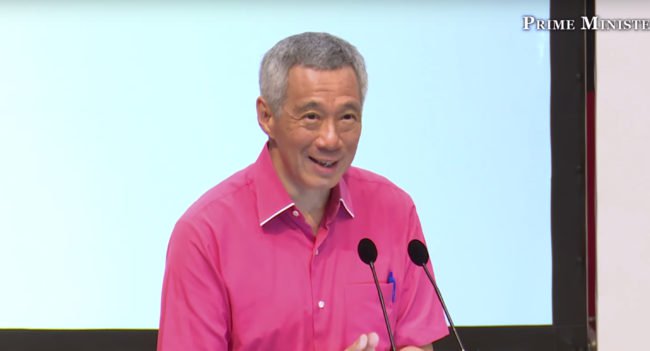A 17-year old student has developed a tool to help people discern if an article they find online is authentic or not. Liu Haohui who does to the Raffles Girls’ School (RGS) told CNA in an interview that she hopes this tool will help addressed the ‘pressing problem’ of fake news.
Speaking at the sidelines of the Young Defence Scientists Programme (YDSP) Congress, Haohui said she had been researching the issue of fake news and realised that there were not viable solutions available to address the problem. The ones that did exist were localised and usually focused on the United States.
Haohui had been accepted to the four month Research@YDSP programme under the Defence Science and Technology Agency (DTSA) and DSO National Laboratories. One of the themes of the programme was fake news.
The young woman said, “I wanted to see how to use data analytics to protect national security.”
After finishing her school exams in October, Haohui signed up for an introductory course on machine leaning on Udemy where she learned about different techniques for detecting fake news. Hungry to knowledge, Haohui completed the 40 hour course in two weeks.
Her assigned mentor at the programme, Mr Ryan Tarn – senior engineer at DSTA – said he recognised Haohui’s initiative and recounted how she has reached out to him even before the start of the programme for ore materials she could learn from.
In tackling the issue of fake news, it wasn’t enough to rely on theories. Haohui said she wasn’t sure how to apply her new knowledge and skills to address the issue. She also realised that finding the right datasets with which to train the machine learning models to identify fake news would be another challenge.
She added also that there wasn’t many fake news articles in Singapore to work with.
Mr Tarn described the dataset which was eventually used to train the predictive model as consisting of 6,000 authentic news articles (5,000 from Singapore and 1,000 international) as well as 6,000 international news articles that were fake.
This is rather strange when you think about it. Considering the fact that the government is attempting to tackle the issue of online fake news with the introduction of the Protection from Online Falsehoods and Misinformation Act (POFMA), you’d get the impression that there was a serious increase of fake news within Singapore. Yet Ms Haohui and her mentor Mr Tarn were unable to find enough fake news articles – or any at all – in Singapore to help train the predictive model.
The few Singapore related fake news articles which they did find were ultimately left out, Mr Tarn said, because they would affect the efficiency of the model.
He added that these six fake news stories were flagged as ‘authentic’ by the model in the first round of testing. He and Haohui thought that the word ‘Singapore’ was being used by the model as an indicator of authenticity as the word was used a lot in authentic articles.
The RGS student said in a press released by DSTA and DSO, “It was very exciting to have hands-on experience and apply data analytics techniques to a project that can potentially strengthen our nation’s security.”
The project eventually won the Gold award at the 2019 Singapore Science and Engineering Fair. Haohui said, “I didn’t expect it at all,” Haohui said. “I just wanted to learn something new.”
The win presents Haohui with the chance of participating in the Intel International Science and Engineering fair in May, an even which DSTA said was considered to be the ‘Olympics’ of youth science competitions. The event will be held in Arizona, United Stated.
Describing the competition as a “great opportunity” to share ideas and connect with like-minded people, Haohui said she wants to also further developer the prototype into a mobile app or website to help Singaporeans make more informed decisions.
“I just want to make a contribution to society,” said Haohui.





